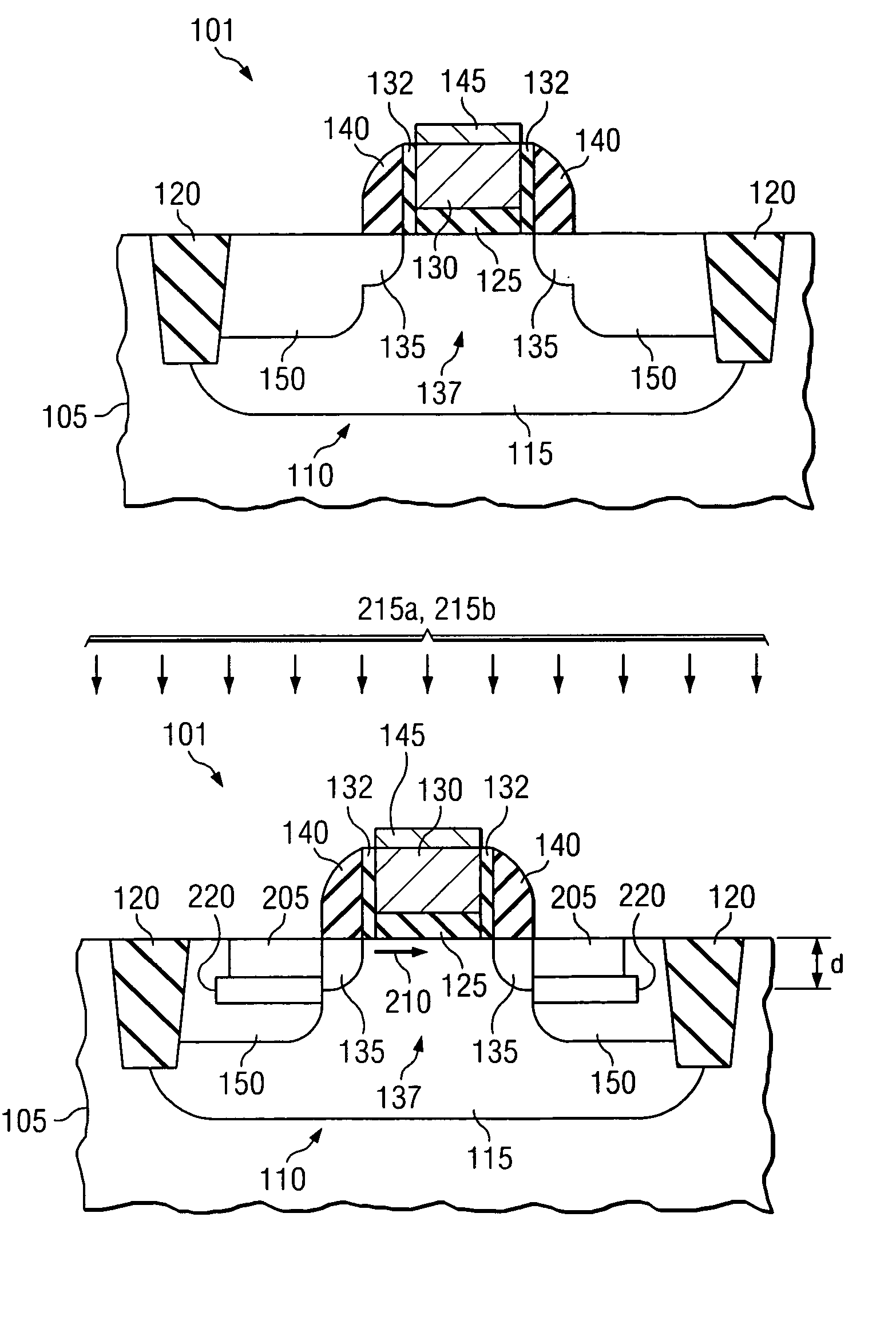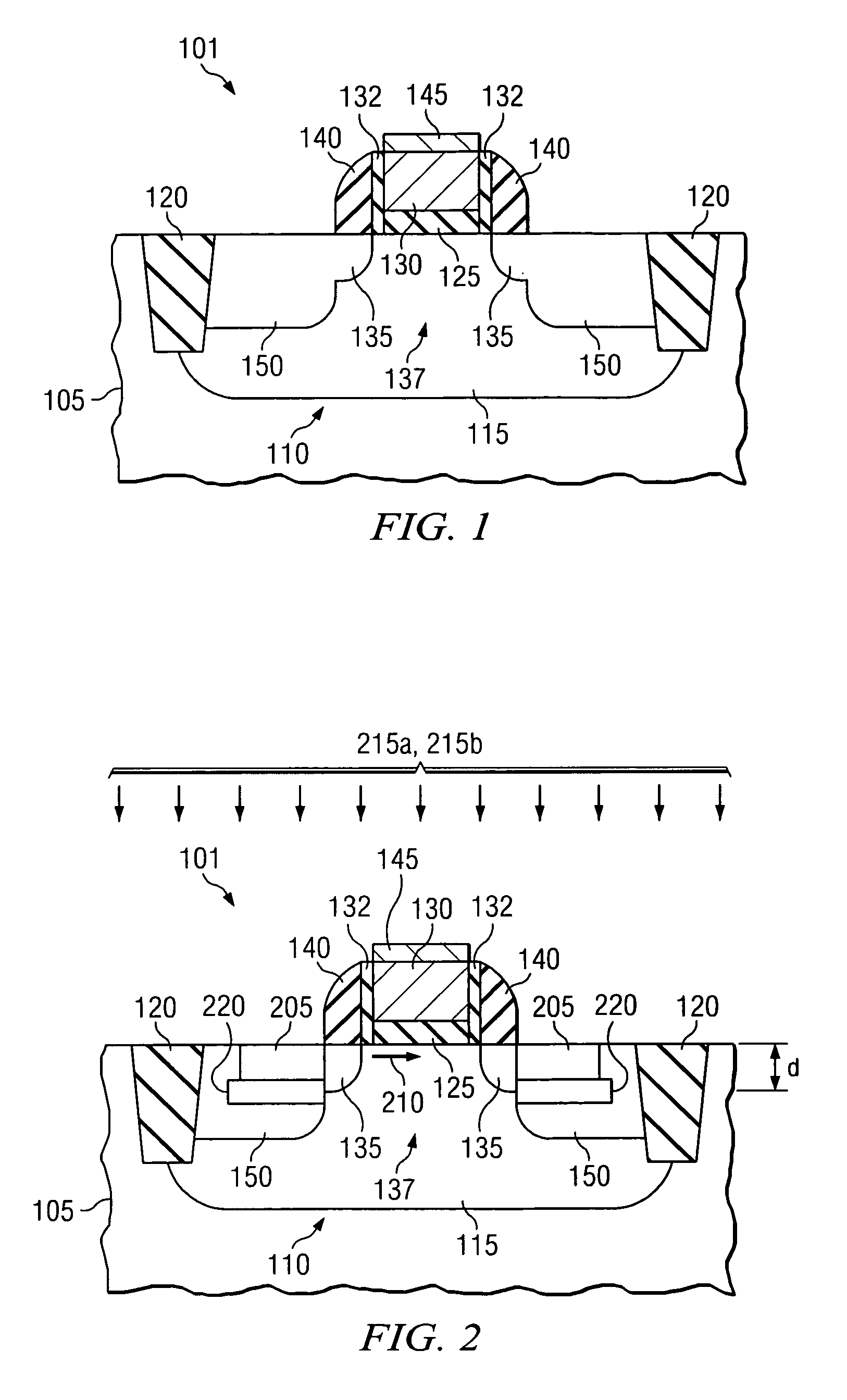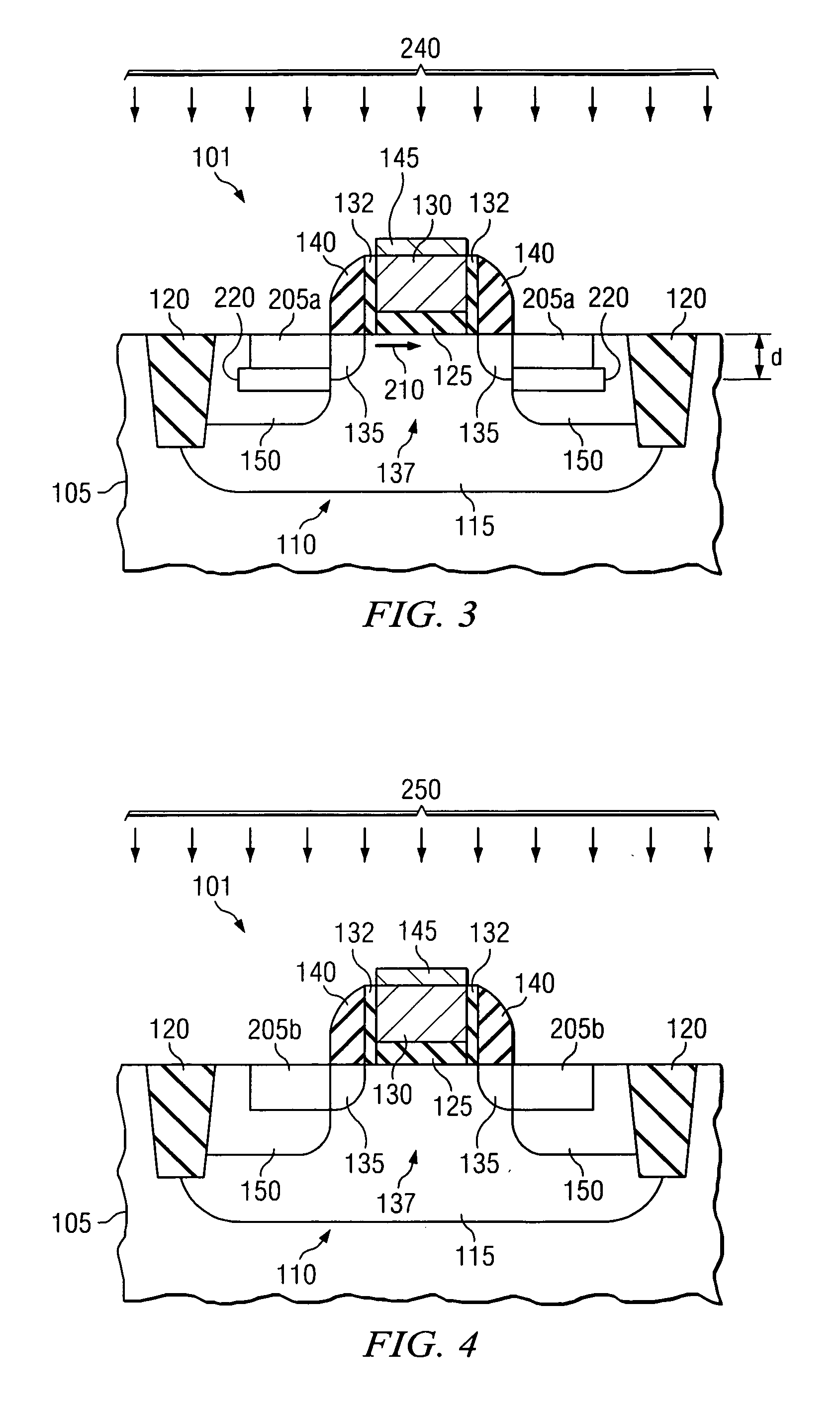Defect-free SiGe source/drain formation by epitaxy-free process
a technology of epitaxy and source, applied in the direction of semiconductors, electrical devices, transistors, etc., can solve the problems of high defect density, high cost, and high approach costs, and achieve the effect of avoiding high cost, low throughput, and avoiding cost and complexity of selective sige epitaxy
- Summary
- Abstract
- Description
- Claims
- Application Information
AI Technical Summary
Benefits of technology
Problems solved by technology
Method used
Image
Examples
Embodiment Construction
[0021] The making and using of the presently preferred embodiments are discussed in detail below. It should be appreciated, however, that the present invention provides many applicable inventive concepts that can be embodied in a wide variety of specific contexts. The specific embodiments discussed are merely illustrative of specific ways to make and use the invention, and do not limit the scope of the invention. The intermediated stages of manufacturing a preferred embodiment of the present invention are illustrated throughout the various views and illustrative embodiments of the present invention.
[0022] This invention relates generally to semiconductor device fabrication and more particularly to structures and methods for strained transistors. This invention will now be described with respect to preferred embodiments in a specific context, namely the creation of a MOSFET device. It is believed that embodiments of this invention are particularly advantageous when used in this proc...
PUM
 Login to View More
Login to View More Abstract
Description
Claims
Application Information
 Login to View More
Login to View More - R&D
- Intellectual Property
- Life Sciences
- Materials
- Tech Scout
- Unparalleled Data Quality
- Higher Quality Content
- 60% Fewer Hallucinations
Browse by: Latest US Patents, China's latest patents, Technical Efficacy Thesaurus, Application Domain, Technology Topic, Popular Technical Reports.
© 2025 PatSnap. All rights reserved.Legal|Privacy policy|Modern Slavery Act Transparency Statement|Sitemap|About US| Contact US: help@patsnap.com



